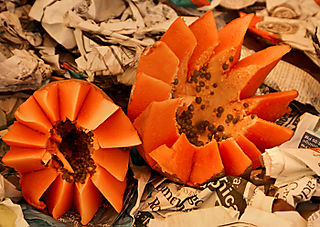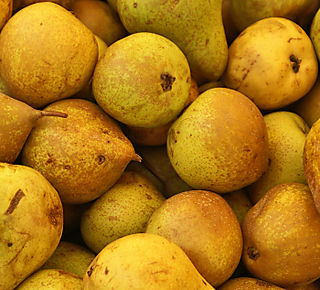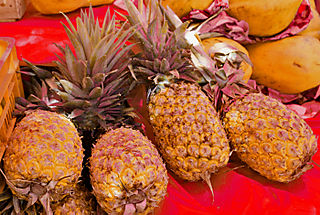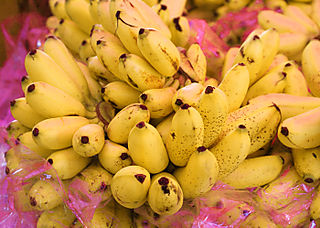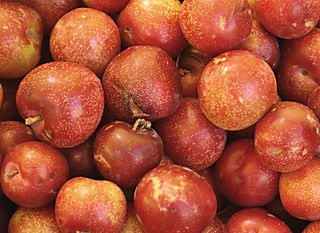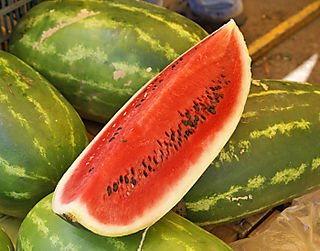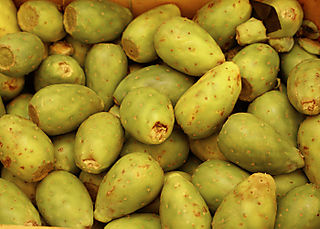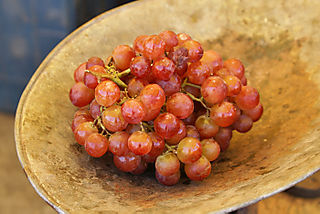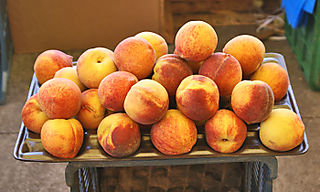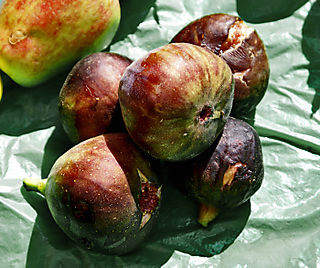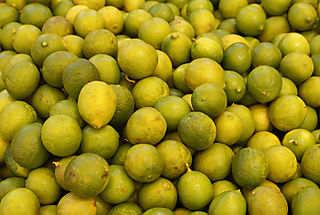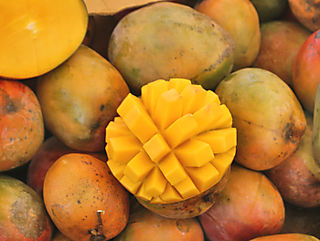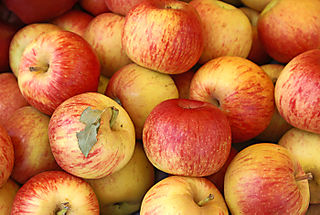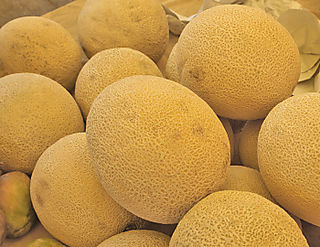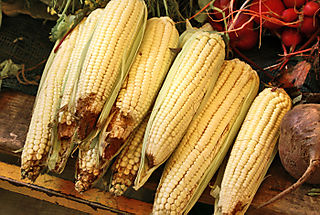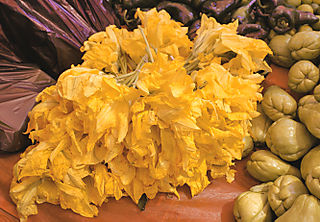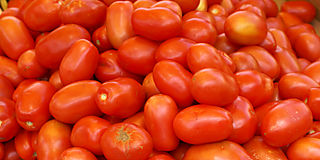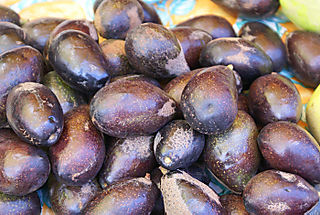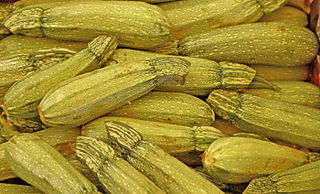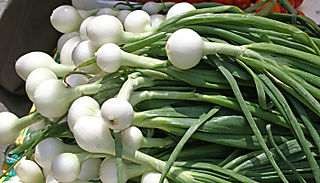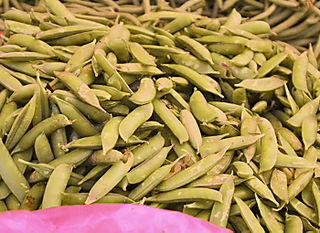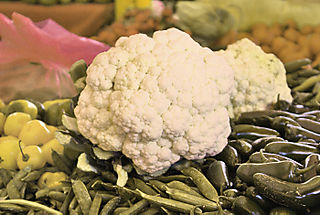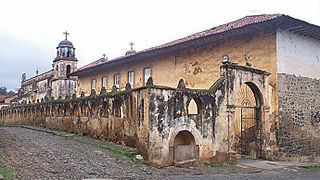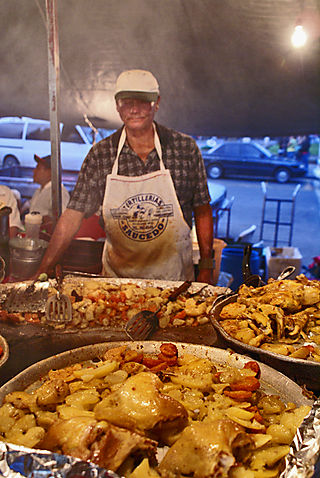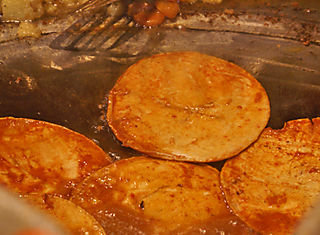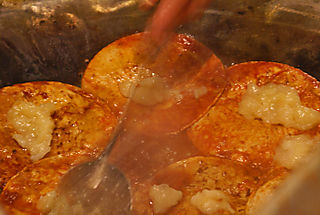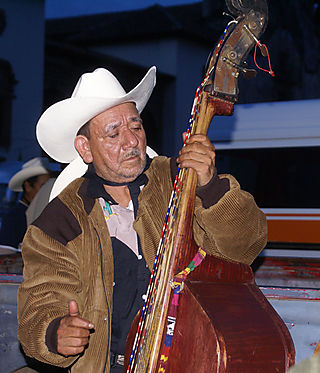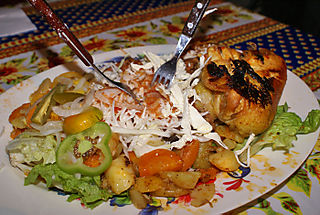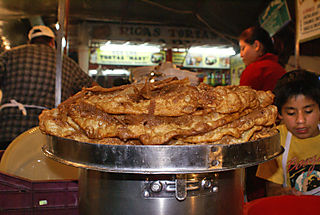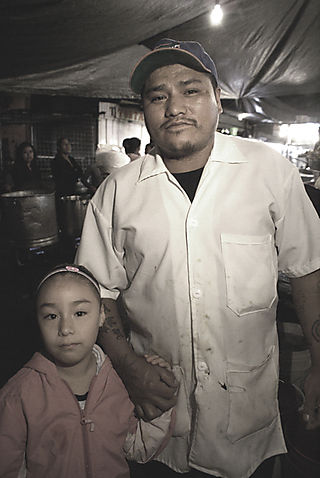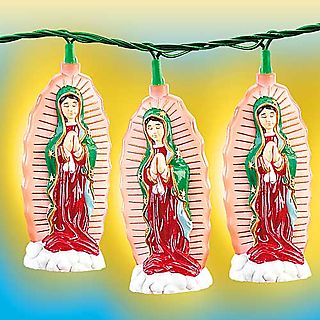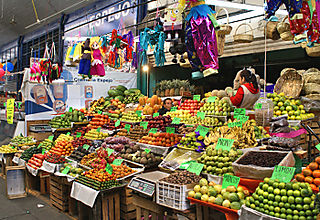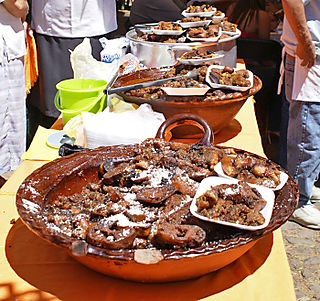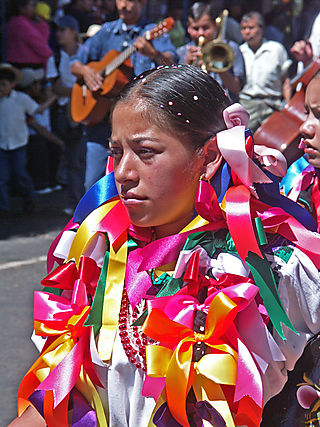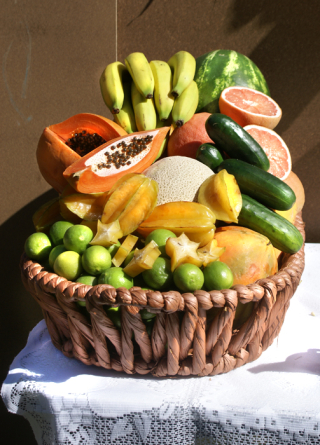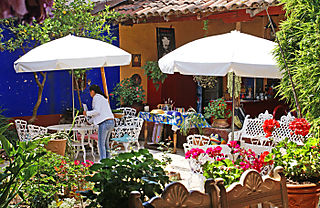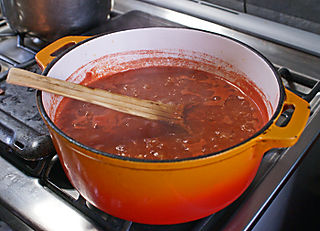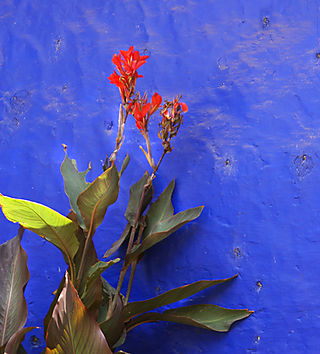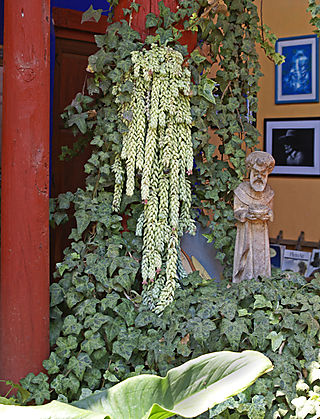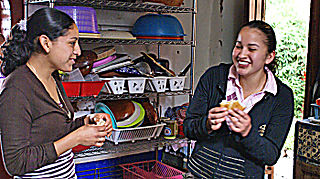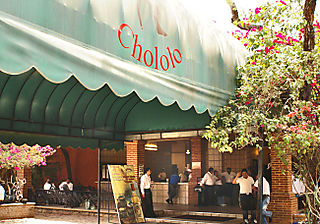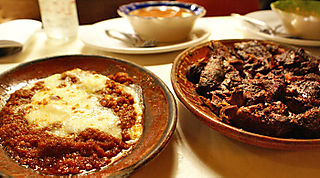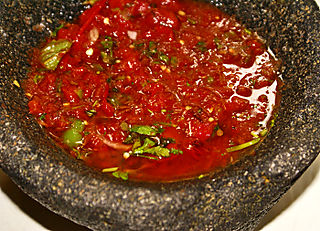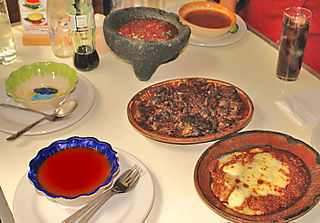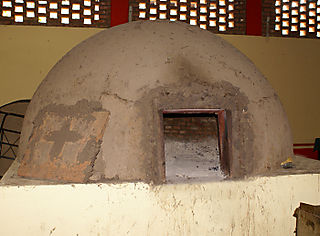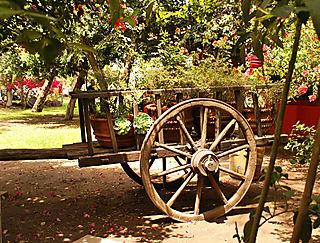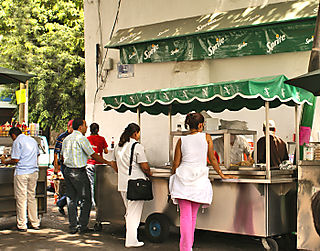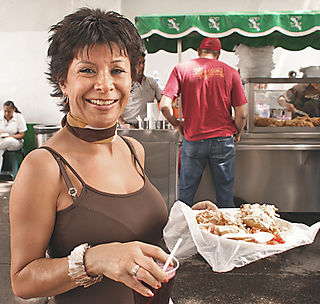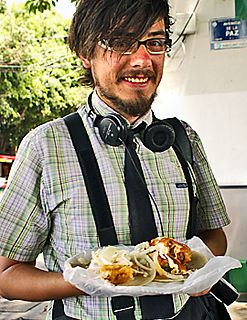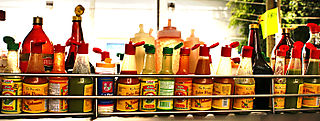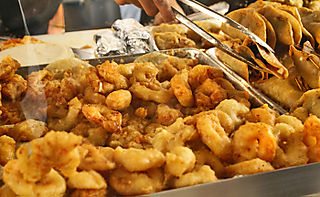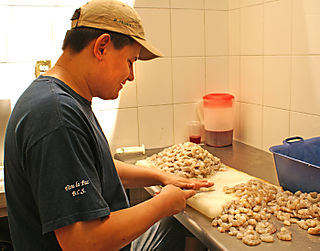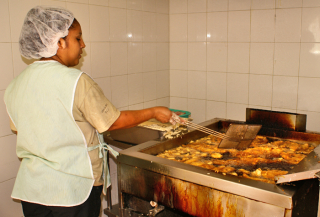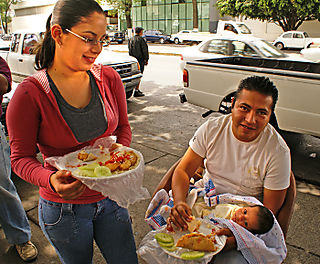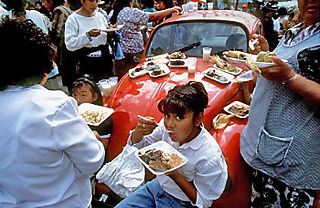
More than a few blocks off the tourist track: lunch in Tepito. Photo courtesy of Federico Gama.
Rachel Laudan, a singularly intelligent and well-spoken friend who lives in Guanajuato, says in her blog that Mexico Cooks! writes about "a dreamy Mexico". I've puzzled a bit over that statement, not knowing if her words are complimentary or if she thinks that I'm an innocent about how things really are here in México lindo y querido (beautiful and beloved Mexico). The truth is, I do think that at times, many things Mexican have a surrealistic, dream-like quality about them. It can be difficult to reconcile the several truths that exist in any one statement about la República mexicana.
Mexico Cooks! usually writes about aspects of culinary and cultural items of interest to Mexicophiles of various stripes. I've deliberately chosen–at least here on Mexico Cooks!–not to delve into the oftentimes problematic and frequently sublimely enigmatic components of Mexican sociopolitical daily life that also fascinate me.

David Lida, author of First Stop in the New World. Photo courtesy of Federico Gama.
However, a few months ago Mexico Cooks! met David Lida, in that blogospheric nouveau way that we've adopted here in cyberspace. I admired his blog and told him so. He admired Mexico Cooks! and told me so. David offered to send me a copy of his latest book, First Stop in the New World: Mexico City, the Capital of the 21st Century. Would I kindly think about reviewing it? With some trepidation, I said, "Send it on." His blog posts were quirky and interesting, but a whole book about the odder side of Mexico City? How good could it be?
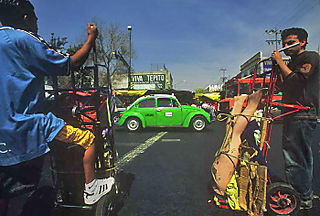
Viva Tepito! Photo courtesy of Federico Gama.
Ay ay ay, friends, the book is really good. It's really, really very good. It's three-thumbs-up good, it's six-stars-in-a-five-star-rating-system good. First Stop in the New World is as spot-on as it gets about Mexico City and about the Mexican character in general.
Lida, a native New Yorker, has lived in Mexico City for nearly 20 years. When he first arrived in Mexico, he spoke little Spanish and was more than a little fearful. Today, he knows Mexico City's down-and-dirty nuances like the back of his (unwashed) hand.
Although David Lida writes about a few typical tourist attractions, for the most part his essays provide insight into a Mexico City that tourists never see. Paradox by paradox, he delineates the Distrito Federal (the Federal District, seat of national government and in that respect analogous to the District of Columbia in the United States). A porno king is juxtaposed with Rigoberta Menchú; Lida's personal secuestro express (express kidnapping) is cheek by jowl with the story of Christ's Passion according to José Manuel Guillén. Lida compares La Central de Abastos (Mexico City's central wholesale produce market) with Tenochtitlán, the Aztec capital, and a 13-year-old homeless glue sniffer to the richest man in the world. It all works, drawing together Mexico City's ancient history and the capitalino's modern life at its most vibrant.
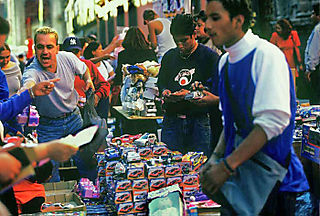
Competition, Tepito style. Photo courtesy of Federico Gama.
This is Mexico City at its grittiest. The details of the seamy side tell us that David Lida really "gets" what the Distrito Federal is all about. Any tourist can write a postcard home about the Palacio de Bellas Artes, the charming Coyoacán plaza, or Sanborn's Casa de Azulejos (House of Tiles). David Lida's knowledge of Mexico City starts on the floor of a taxicab and leads to Tepito, the capital of piratería (pirated goods) and home of La Santa Muerte (St. Death).
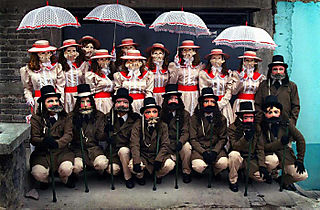
You'll have to ask the photographer about this photo. Photo courtesy of Federico Gama.
I'm not alone in loving First Stop in the New World. Here's what a few other reviewers have to say:
"It’s received some incredible reviews since it was published in June.
Reed Johnson of the Los Angeles Times called it “streetwise and
up-to-date … a charmingly idiosyncratic, yet remarkably comprehensive
portrait of one of the planet’s most misinterpreted urban spaces.” Mary
D’Ambrosio of the San Francisco Chronicle said, “As Joseph Mitchell
captured life on the margins of midcentury New York, Orhan Pamuk the
melancholia of 20th century Istanbul, and Martha Gellhorn civilian
suffering in Civil War Spain, Lida masterfully details the plight of a
struggling and repressed city.” And Richard B. Woodward of The New York
Times opined, “To test the quality of a travel book, it helps to ask:
Would you like to share a meal or a drink with the writer? On the
evidence of his book, which reveals him to be an expansive soul with
big eyes and an even bigger heart, Mr. Lida should expect calls from a lot of newly arrived strangers, including me.”
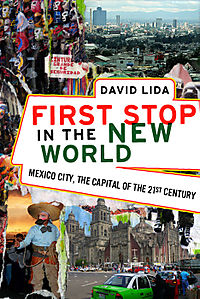
First Stop in the New World, book cover. Photo courtesy of David Lida.
So buy the book. You have to have it. Look in the book list, to the left on this page, and click on the book cover to be taken directly to Amazon.com. Don't wait, do it now!
Looking for a tailored-to-your-interests specialized tour in Mexico? Click here:
http://mexicocooks.typepad.com/mexico_cooks/2008/05/rinconcitos-esc.html
